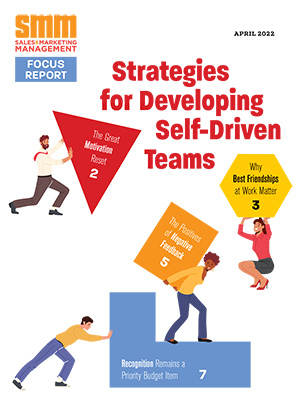Buyer pressure on sales professionals to reduce pricing has reached new levels in the current economic environment. More than ever, the sales force’s ability to protect price premiums will have a dramatic impact on companies’ revenues and profits.
Research shows on average, a 1 percent reduction in price results in an 11 percent decrease in profits. While this ratio varies by industry and company, the power of price on company profit remains significant. Unfortunately, in many cases, the front-line sales force does not completely understand the profit consequences of even small price concessions, nor are they well armed to defend against such concessions.
The companies that will be most successful in today’s environment will be those that best equip their sales forces to tailor, communicate, quantify, and prove the value of their offerings relative to alternatives. This capability is the sales force’s greatest weapon for protecting a company’s price premium, establishing customer loyalty, and driving growth.
Many sales organizations have struggled to develop effective value-based selling capabilities. Selling based on value requires different and higher-order skills than traditional selling approaches emphasizing social relationships, basic product features, and price.
The factor that has most frustrated sales leader efforts to build value-based selling has been the “people” dimension. Designing a new sales process and conducting its associated training programs are relatively straightforward tasks.
While both are important, however, neither is sufficient for achieving the change in salesperson beliefs, behaviors, and skills required for value-based selling. A radical new approach to sales force competency models and implementation can help break through this barrier.
The traditional approach to sales force competency model design looks to define basic building blocks required for success. Examples might include communication, business acumen or product knowledge. While this approach works fine with relatively simple, traditional selling methods, it doesn’t work as well with value-based selling.
The typical value-based sales process includes the following stages:
1. Account planning and strategy (an ongoing activity).
2. Customer needs assessment and validation.
3. Solution development and valuation (an internal activity).
4. Solution proposal and negotiation.
5. Solution implementation.
6. Value maximization and reinforcement.
When it comes to value-based selling, the fatal flaw with traditional competency models is that they fail to provide a clear picture of the specific knowledge, behaviors, skills, and attitudes required for success at each stage in the sales process.
For instance, the communication skills and business acumen competencies required for Stage 1 are quite different from those required in Stage 4. Traditional approaches leave it up to the sales force to piece together how these basic building blocks must vary and come together in the context of each stage in the sales process.
Companies wanting to integrate value-based selling into their sales organization need to consider a radically different approach to competency model design. Specifically, one that:
1. Uses clearly outlined stages of the sales process as the competency model dimensions, as opposed to more generic building blocks such as communications or business acumen.
2. Creates a detailed description of the knowledge, behaviors, skills, and attitudes specifically required for success at each stage of the sales process and at different levels of proficiency (for example, basic, advanced, and expert).
3. Directly integrates this new competency model into personnel selection processes, coaching processes and tools, the performance review model, and motivation systems.
This approach allows sales management to be much more specific and targeted than other approaches in how it communicates expectations, conducts training, assesses team and individual capabilities and gaps, and provides feedback and coaching.
Consider the experience of a Fortune 500 company that rapidly increased the value-based selling capability in its B2B organization:
In 2004, the company’s sales leadership concluded their sales force lacked the value-based selling capability critical to both competitiveness and success. The sales force had become a service force where many salespeople seemed more interested in negotiating a good price for the customer than on commanding a price that ensured mutual value for both organizations.
Increasing buyer sophistication and global competition further hurt the company, as its core offerings were being rapidly commoditized and business performance was in decline.
An in-depth assessment revealed the sales force was not capitalizing on the full value the company created for its customers. Few could list all the key ways in which the company created customer value, let alone communicate, quantify, and prove a compelling value proposition relative to alternatives.
When presented with a value-based sales strategy and process, many salespeople believed they were already following the practice or that the strategy would not work in their market.
Sales leaders achieved a major breakthrough when they convinced the company’s human resources department to adopt a highly customized approach to the competency model for the sales team. In the past, the competency model had been generic—it was the same for sales managers as for any other manager in the company. Needless to say, failed to address the specific and unique competencies required for success in sales, particularly value-based selling.
Sales leadership, HR, and a value-based selling expert worked together to craft a new sales competency model—one incorporating the eight dimensions most essential to value-based selling success, as well as most reflective of the company’s preferred value-based sales process. Those dimensions are:
1. Territory and pipeline management.
2. Account planning.
3. Customer needs assessment.
4. Market offering/value proposition development.
5. Value proposition communications and proof.
6. Negotiations and solution agreement.
7. Implementation management.
8. Value reinforcement/account management.
The team resisted the urge to add other dimensions that, while valid, were not as important. They developed a comprehensive and objective description of the knowledge, behaviors, skills, and attitudes characterizing basic, skilled, and expert levels of competency for each dimension.
This approach defined basic elements like communication and business acumen in the context of the specific stage in the sales process. This made it much easier to understand and communicate the success metrics for each stage.
The group then incorporated the new competency model directly into downstream sales performance management:
1. The sales training program was redesigned to align directly with the skills required to perform well with all eight dimensions.
2. A coaching model and tools were created to enable effective coaching and apprenticeship for each dimension by sales management.
3. The performance review model was re-crafted to mirror the competency model, with the addition of goal attainment.
4. Personnel selection and promotion evaluations were reengineered to align with the competency model. For instance, a salesperson had to demonstrate intermediate or higher competency for all eight dimensions before being considered for a promotion to a key account manager position.
Sales leadership engaged managers and the sales force in a 360-degree capability evaluation process. They used the competency model to communicate their expectations and to underscore “as is” versus “will be.”
Some salespeople were reassigned to new levels, an action including promotions, demotions, and reassignment outside of the sales force. Sales leadership placed dramatic emphasis on rigorous coaching via the competency model. This rapidly increased understanding of the new sales approach, and ensured the adoption of behaviors and the apprenticeship required for success.
Six months later, customers recognized and praised the new sales approach. The value of the company’s solutions had become clearer, and most importantly, the company’s downward sales and profit trend had reversed.
As illustrated by the above example, a new approach to the sales force competency model—both in terms of design and implementation—can play a pivotal role in helping the sales force understand and adopt the value-based selling approaches needed for success in today’s environment. Given its powerful effect on the company bottom line, sales leaders can ill-afford to neglect this powerful driver of sales performance.
Michael B. Moorman is a managing principal and head of the B2B practice at ZS Associates, a global management consulting firm specializing in sales and marketing consulting, capability building, and outsourcing. He can be contacted at mike.moorman@zsassociates.com. Kelly Tousi is a principal with ZS Associates. She can be reached at kelly.tousi@zsassociates.com.
Driving Value-Based Selling with the Competency Model
Get our newsletter and digital focus reports

Stay current on learning and development trends, best practices, research, new products and technologies, case studies and much more.

